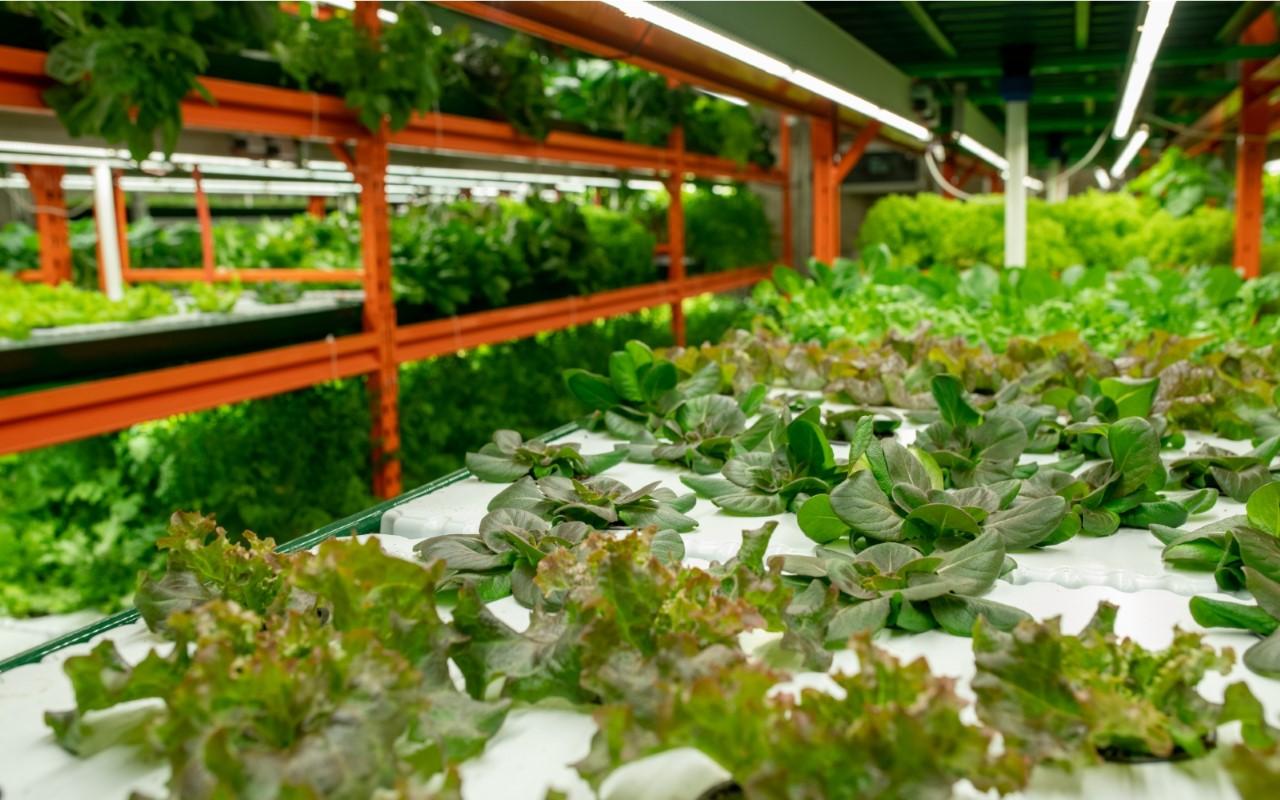As local and responsible consumption becomes increasingly important to Quebecers (much to the delight of the planet), we need to start finding alternatives to so-called traditional agriculture. What if vertical farming was a solution to providing people with healthy, local, and affordable food?
This planting technique makes it possible to produce a maximum of food in a minimum of space by superimposing trays on which plants grow. These vertical shelves are arranged in closed trusses where temperature, brightness, and humidity are meticulously monitored and controlled.
With this approach, hundreds of species of vegetables, fruits, mushrooms, and herbs can be grown in quantities up to ten times larger than in greenhouses and a hundred times more than in a field. The concept seems very modern, compared to the fields of rows upon rows of lettuce and potatoes we’re all so familiar with! But the benefits of vertical farming don’t stop at its yield capacity; this innovative new practice also offers sustainable solutions to the environmental challenges faced by traditional agriculture.
Water and energy savings
By concentrating their plantations in an optimized space, vertical farms consume less water and energy. In fact, the majority of these crops use hydroponics, a method that consists of growing plants in a neutral substrate (clay balls, sand, horticultural felt…) that requires up to 95% less watering than conventional planting in soil.
A more local approach
Less cumbersome, vertical farms can be established closer to cities, and therefore to consumers. This proximity reduces costs and delivery times while facilitating the implementation of a traceability system. They also contribute to greater food autonomy for Quebec, allowing the province to grow its own food rather than import it across borders.

Healthier food
The perfectly controlled environment of vertical farms helps prevent the appearance of diseases and the threat of insects in plantations. This means farmers can avoid using pesticides, herbicides, and fungicides, substances that are harmful to the environment and to our health, and that many consumers are adamant about eliminating from their diet completely.
Less waste
Protecting crops from bad weather and the vagaries of the climate, especially in Quebec where winters are harsh, ensures a constant yield all year long. For example, Vaudreuil’s Ferme d’Hiver grows strawberries year-round. It has become the largest vertical plantation in Canada and aims to replace 10% of the country’s strawberry imports within three years.
Rachelle Béry supports Quebec’s vertical farms
To taste fresh, local food and see for yourself the prowess of Quebec’s vertical farms, simply look for one of these businesses on the shelves of Rachelle Béry stores: La boîte maraîchère, Ferme d’hiver, and AquaVerti. Bon appétit!
And what about the rest of the planet?
In the United States, Square Roots had the brilliant idea of recycling old shipping containers to install vertical plantations of salad, basil, cilantro, and dill, replacing almost one hectare of farmland.
In London, the Growing Underground farm produces about 2 tons of food per month in underground tunnels that were intended to protect the population in case of attack during the Second World War.
In Japan, the multinational Pasona Group has established vertical culture in the middle of its offices! A 90-square-metre rice field adorns the lobby of this corporate building, and fruit trees have been planted as partitions to separate the employees’ cubicles.
Finally, worldwide, Projet Hectar sells a plant shelf that allows you to grow your own vertical vegetable garden at home. It can grow 128 different plant species, from kale and spinach to lettuce and green beans.
Did you know?
The concept of vertical farms came about thanks to NASA research, which was looking at how astronauts could grow fresh fruits and vegetables in an enclosed, restricted space with minimal water and substrates.

